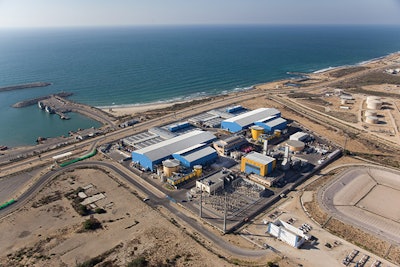
As much of the Western U.S. continues to fret and ration its way through the current historic drought, those looking for possible long-term solutions might do well taking a long look at Israel’s tech-based approach to water management and supply.
In a recent article appearing on Bloomberg.com (see: “Israeli Desalination Shows California Not to Fear Drought” by Alisa Odenheimer and James Nash), “Six decades of providing water in a country that’s 60 percent desert have made Israel a technological leader in the field, a model that points the way for drought-stricken California.”
Among a number of water-smart measures deployed throughout Israel — a list that includes advancement in reuse of treated sewage for agricultural irrigation, a software-based early-warning system for leak prevention and computerized drip irrigation — desalination of seawater tops the list. Desalination currently provides 25 percent of Israel’s water.
“We don’t have enough water from nature,” says Avraham Tenne, head of the Desalination Division at Israel’s Water Authority, based in Tel Aviv. “But we are now able to close the gap between the water that nature has given us, and the demand for water. With a touch of a button, we can produce 600 million cubic meters of water.”
The most popular type of desalination involves reverse osmosis (RO) filtration of pre-treated seawater. Although extremely effective in generating potable water, desalination requires a tremendous amount of energy. The environmental impact has led an initial reluctance to turn to the technology. Even the most avid proponents of desalination argue that it’s best applied as part of a multi-faceted approach to water conservation and management.
California, which is in the midst of its worst draught since rainfall records have been kept, currently has three desalination plants in operation providing water for general use, and one of the world’s largest RO facilities in Fountain Valley treating gray water that is then used for groundwater reinjection. Currently there are 15 more RO plants in the planning stages.
Meanwhile, many cities and counties in the Golden State are implementing moderate to extreme rationing measures, including prohibition of watering landscape or filling swimming pools. Whether or not these stiff measures will result in increased public support for desalination technology remains to be seen.






































